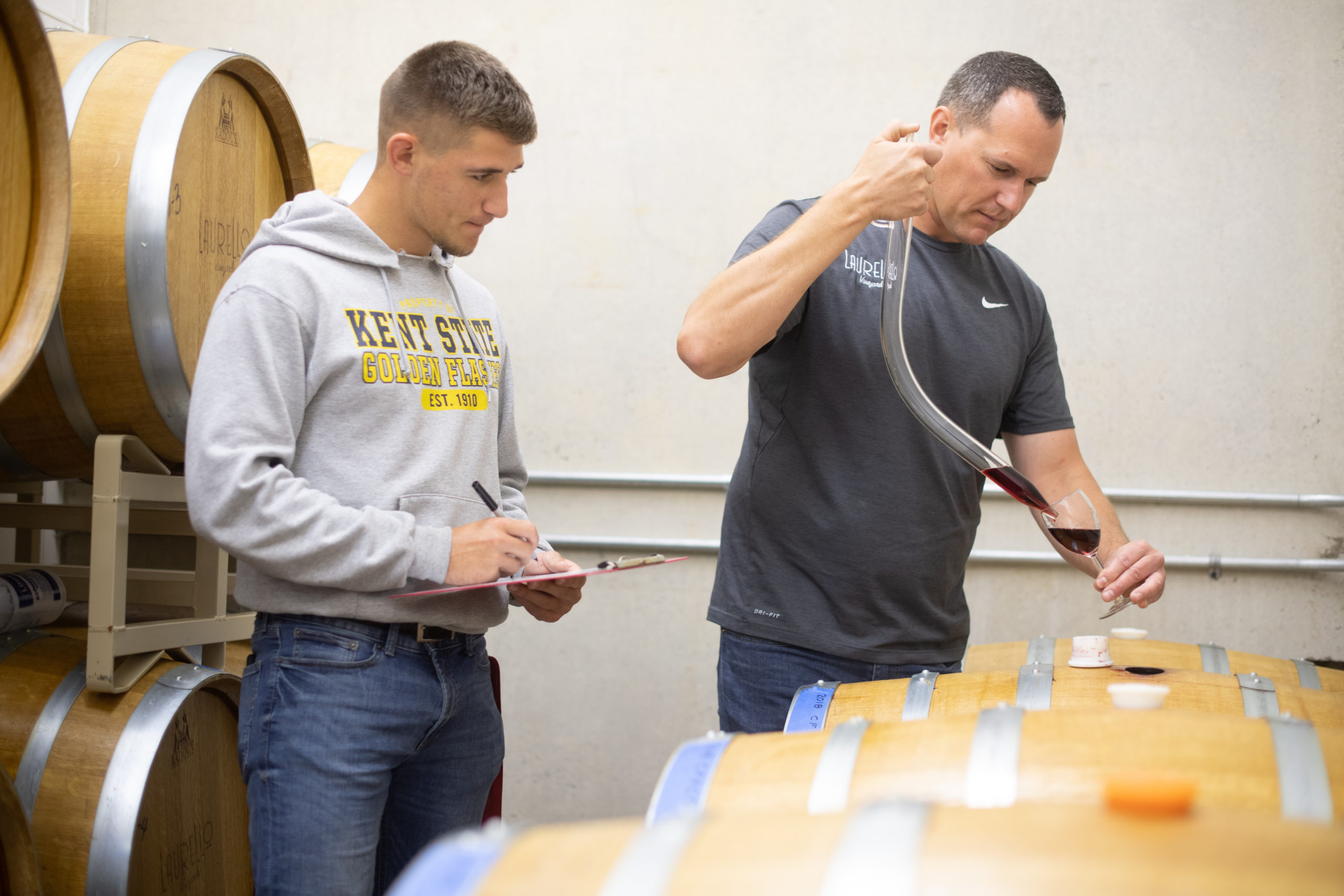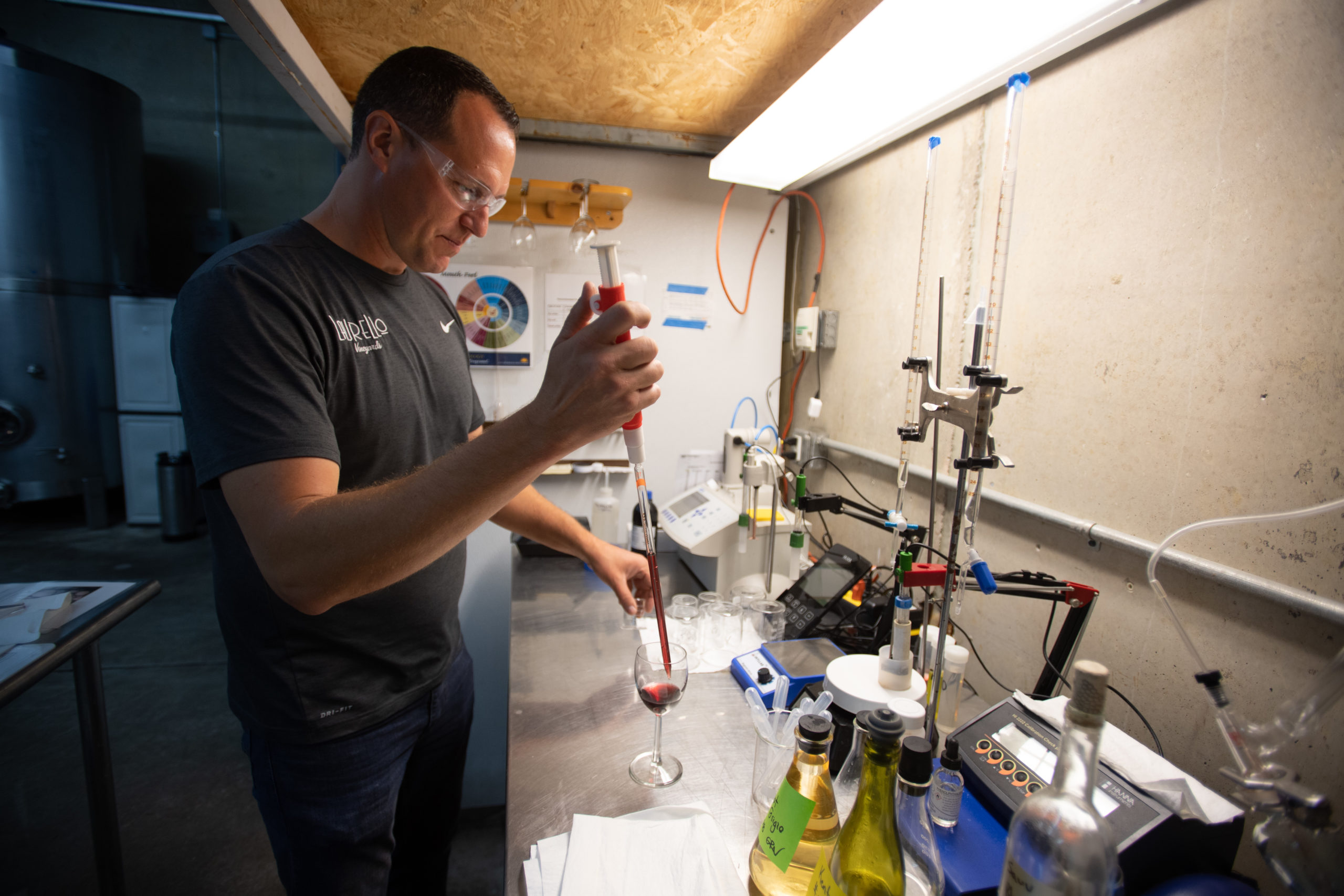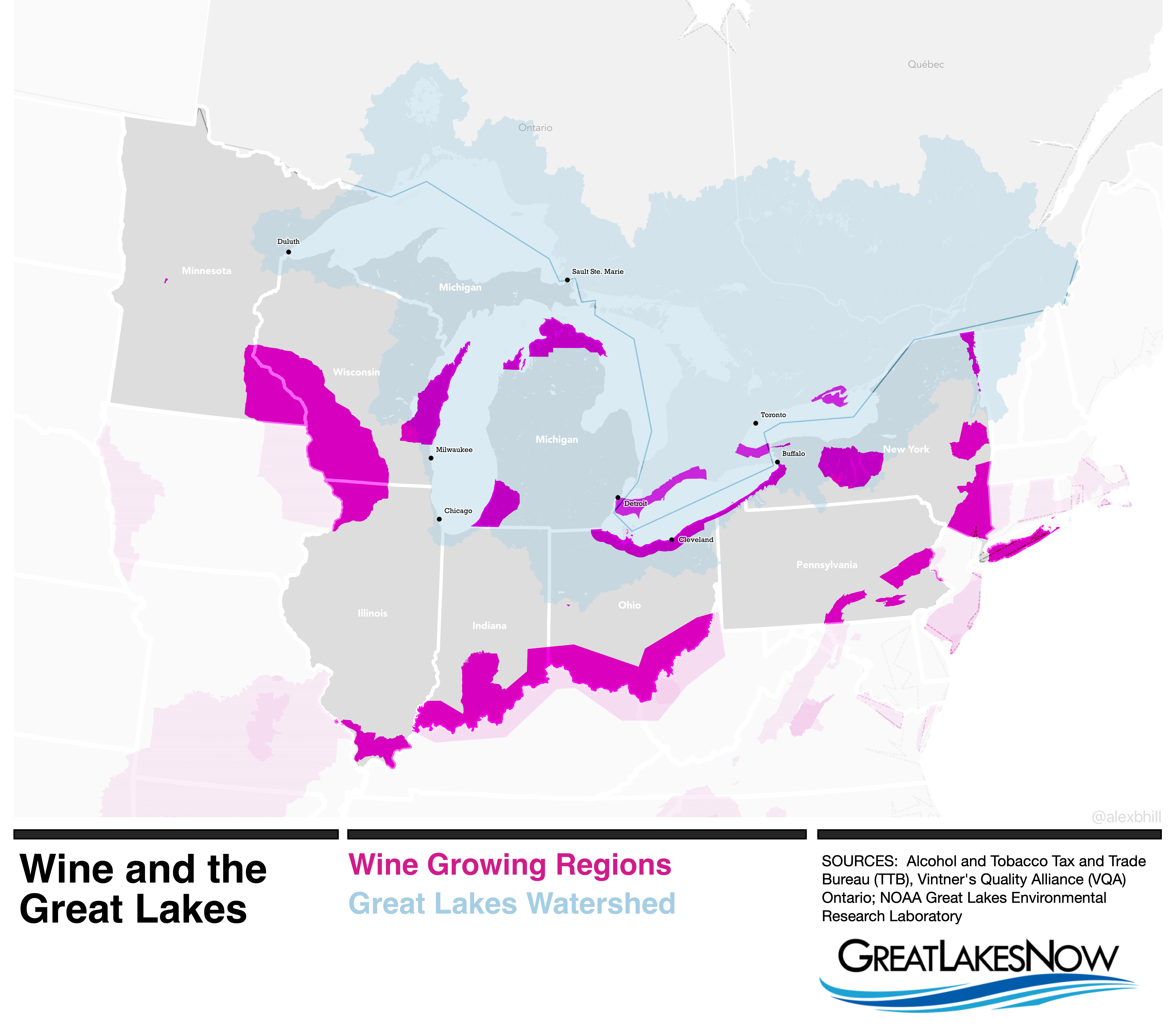
The Erie County Ag Research Corporation facility started as a small building in northeast Pennsylvania near the Lake Erie shore in 1948. Pennsylvania State University bought it just four years later.
Now, Penn State’s grape research center boasts 43 acres and has a joint program with Cornell University’s Grape Research Lab in New York. At both labs, graduate students work alongside faculty to research plant pathology, entomology and viticulture. Some of that research is focused on climate change and mitigating its potential negative impacts on the region’s vineyards – increasing pest problems and changing winters among that.
But while it may seem that climate change research has only emerged as a priority in recent years, in practice the impact of climate on grapes is nothing new to many who are experts in the field.
Rather, the field has simply evolved.
“(Viticulture) has likely not changed much, but vineyard management practices and cultivar choices continue to be refined through the use of developing technology, climate patterns and new knowledge,” said Cain Hickey, PhD viticulture extension educator at Penn State.
Michael Campbell, director of the Penn State Research Center, focuses much of his efforts on the impact of pests on the ability of grape plants to thrive. Campbell calls climate change a “wild card” and says it is the driving factor causing a change in both pest behavior and the type of diseases that are present in the region. Part of Campbell’s job is attempting to predict or measure how those diseases and insects behave as the climate shifts.
Warmer weather and new pests ranging from fungus to yellow jackets are straining grape plants’ ability to survive in the region. Climate change has led to the presence of invasive species that have no natural predators to control their proliferation. As a result, grape growers must introduce pesticides to manage such insects. This creates an additional cost for grape growers which can become prohibitive over time.
In 2019, Rufus Isaacs at Michigan State University’s entomology department conducted a study to identify trapping strategies for late season wasp infestations to reduce grape cluster damage, as a possible other solution for the evolving insect problem.
“As climate changes, it will bring about changes in pest pressure and thus cultivar suitability at a given site will change, as will optimal pest management practices. Thus, indirectly, we are always studying best ways to manage vines as climate and weather patterns change,” Hickey said.
Shifts in the region’s climate have also shortened the period between frosts. Penn State recently published a paper showing that the winters in Lake Erie are about 12 to 14 days shorter than they were in the 1970s.
Shorter winters end up damaging the grape plant because warmer weather prompts an earlier growth, making the plant more susceptible to frost damage overall, Campbell said.
Currently, Michela Centinari, associate professor of viticulture at Penn State, has a team of students in his lab working on climate change and its impact on air temperature. One PhD student received a fellowship from the U.S. Department of Agriculture to investigate how increased air temperature in the late summer and fall might affect vine survival in winter’s colder temperatures.
Centinari’s lab has also been working on research related to the use of under-vine cover crops as a management practice for mitigating the impacts of excessive precipitation, one of the symptoms of climate change in the region.

Kent State University students doing lab analysis work during their practicums. (Image courtesy of Kent State University at Ashtabula)
The wine industry is built on grape production. Any threat to grape vines also threatens the stability of the wine industry. The volatility in production resulting from climate change is causing new problems for the industry, according to Kevin Martin, extension educator in business management at the Lake Erie Regional Grape Program at the Cornell Lake Erie Research and Extension Laboratory.
“[Growers plan] for higher yields just in case there is a significant frost that impacts the crop,” Martin said. “So, you get larger and larger crops per acre in good years, and smaller and smaller crops in bad years because the frost injury has the potential to be more severe.”
This production fluctuation can be problematic to the grape and wine industry as drastic changes can be difficult to anticipate and lead to incurring higher costs for producers.
In Ohio, grape research and extension efforts started at Ohio State University in the late 1960s. Over 50 years ago when these efforts commenced, there were just roughly 25 wineries in the Buckeye State.
Initial research projects were geared toward establishing a new era of the Ohio grape and wine industry, according to Todd Steiner, enology program manager and outreach specialist at Ohio State.
“Ohio State University researchers were also vital in introducing new French hybrid grape varietals and their corresponding wine potential to the Ohio wine industry currently,” Steiner said in an email. “Several of the varieties which were of interest and ultimately grown in Ohio vineyards and processed into wine included Foch, Chancellor, Dechaunac, Baco Noir, Vidal blanc, Vignoles and Seyval Blanc during this time. Many viticulture and enology studies were accomplished on these varieties in addition to American/Labrusca varieties.”
Through the years, OSU’s research also focused on the importance and use of sulfur dioxide, malolactic fermentation and grape maturity. The studies yielded information in these areas that are still vital to the wine production process now, continuing to inform wine quality regardless of the size or experience level of a given winery.

Map of wine growing regions around the Great Lakes (Image created by Alex Hill for Great Lakes Now)
Today, Ohio State continues its grape research on the shores of Lake Erie. The Ohio State Field Station, established in 1985, recently partnered with Kent State University’s Ashtabula County branch for a grant in enology research from the Ohio Grape Industries Committee.
Along with collaborating with Ohio State’s grape research efforts, Kent State Ashtabula offers degree and certificate programs related directly to wine production, including a variety of associates degrees in viticulture and enology.
According to Kent State’s Lori Lalak Lee, senior special assistant and program liaison for viticulture and enology, the two universities will begin two projects starting with this year’s harvest and focus on enology research priorities set forth by OGIC. The research will be conducted in conjunction with Markko Vineyard in Conneaut, Ohio, also located close to Lake Erie.
One of the projects will focus on infection levels and chemical management to determine if some vine rot can be tolerated without causing major chemical changes or a reduction in quality and taste. The other project will analyze handling methods for stability of pétillant naturel, or pét-nat, sparkling wine. This investigation will assess the effect of different levels of intervention at different sweetness levels on the overall shelf life of the wines.
The research programs are an essential part supporting a thriving wine industry in the Great Lakes Region.
“Our overall goal is to provide the industry with practical recommendations that can assist industry members with making better quality wines,” Lee said.
Catch more news at Great Lakes Now:
Great Grapes: Soil and climate have made the Great Lakes a top wine-producing area
O Christmas Tree: Is your Christmas tree environmentally friendly?
Featured image: Kent State University students doing lab analysis work during their practicums. (Image courtesy of Kent State University at Ashtabula)




